Liverpool, Merseyside, England, UK 作者: 来源: 发布时间:2021-01-08
I. Population and Area
Continent: Europe
Country: The U.K
State/Province: England
City/Town: Liverpool, Lancashire
Total Area: 43.17 (sq mi)
Population in 2019: 49.80(thousand)
II. Natural Geography
Environment
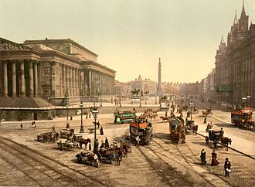
Liverpool has been described as having "the most splendid setting of any English city." At 53°24′0″N 2°59′0″W (53.4, −2.98), 176 miles (283 km) northwest of London, located on the Liverpool Bay of the Irish Sea the city of Liverpool is built across a ridge of sandstone hills rising up to a height of around 230 feet (70 m) above sea-level at Everton Hill, which represents the southern boundary of the West Lancashire Coastal Plain.
The Mersey Estuary separates Liverpool from the Wirral Peninsula. The boundaries of Liverpool are adjacent to Bootle, Crosby and Maghull in south Sefton to the north, and Kirkby, Huyton, Prescot and Halewood in Knowsley to the east.
Climate
Main article: Climate of Liverpool
Liverpool experiences a temperate maritime climate (Köppen: Cfb), like much of the British Isles, with relatively mild summers, cool winters and rainfall spread fairly evenly throughout the year. Rainfall and Temperature records have been kept at Bidston since 1867, but records for atmospheric pressure go back as far as 1845] Bidston closed down in 2002 but the Met Office also has a weather station at Crosby.
During the period 1981–2010, Crosby recorded an average of 32.8 days of air frost per year, which is low for the United Kingdom.[109] Snow is fairly common during the winter although heavy snow is rare. Snow generally falls between November and March but can occasionally fall earlier and later. In recent times, the earliest snowfall was on 1 October 2008 while the latest occurred on 15 May 2012.Although historically, the earliest snowfall occurred on 4 September 1974 and the latest on 2 June 1975.
Rainfall, although light, is quite a common occurrence in Liverpool, with the wettest month on record being August 1956, which recorded 8.71 in (221.2 mm) of rain. The only other month to exceed 8 in (200 mm) was September 1976. However, droughts can occasionally become a problem, especially, but not exclusively, in the summer, this happened most recently in 2018. However, the longest run of days without any rainfall was 41 days between 16 July and 25 August 1995. The driest year on record was 2010, with 15.76 in (400.2 mm) of rain and the wettest was 1872, with 45.67 in (1,159.9 mm).
Green belt
Further information: North West Green Belt
Liverpool is a core urban element of a green belt region that extends into the wider surrounding counties, which is in place to reduce urban sprawl, prevent the towns in the conurbation from further convergence, protect the identity of outlying communities, encourage brownfield reuse, and preserve nearby countryside. This is achieved by restricting inappropriate development within the designated areas, and imposing stricter conditions on permitted building.
Due to being already highly built up, the city contains limited portions of protected green belt area within greenfield throughout the borough, at Fazakerley, Croxteth Hall and country park and Craven Wood, Woodfields Park and nearby golf courses in Netherley, small greenfield tracts east of the Speke area by the St Ambrose primary school, and the small hamlet of Oglet and surrounding area south of Liverpool Airport.
Airport
Liverpool John Lennon Airport terminal building
Liverpool John Lennon Airport, which is located in the south of the city, provides Liverpool with direct air connections across the United Kingdom and Europe. In 2008, the airport handled over 5.3 million passengers and today offers services to 68 destinations, including Berlin, Rome, Milan, Paris, Barcelona and Zürich. The airport is primarily served by low-cost airlines, notably Ryanair and Easyjet, although it does provide additional charter services in the summer.
III. GDP
List of metropolitan economies by size
Liverpool GDP : 57.3 (2012, $bn, PPP)
IV. Industrial Characterisitics
Major industries:Throughout the industrial revolution, Liverpool became the world's leading city for cotton production, as well as continuing to experience a boom in its other industries – including slavery. Because of this its population grew quite rapidly from 6,000 to over 80,000.
Big project:Bramley Moore Dock Stadium
As of last week, plans for Everton's new stadium have officially been submitted.
The club now faces a wait as its proposals are examined by Liverpool Council and eventually voted on by its planning committee, but if the club's timetable goes to plan Bramley Moore Dock is likely to be well up and running by 2030
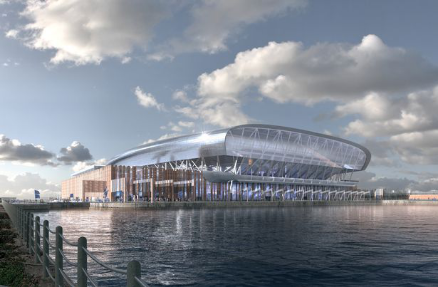
V. Attractions
1. The Beatles:
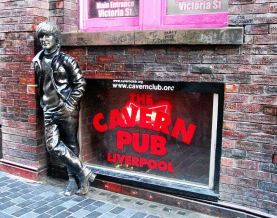
Liverpool is famous as the birthplace of The Beatles. Various tours offer fans the opportunity to follow in their footsteps (Penny Lane, Strawberry Fields) and usually include The Beatles Story in Albert Dock and the rebuilt Cavern Club, where they made their debut in 1961. Other Beatles related sites include the Cavern Walks (murals by Cynthia Lennon); The Beatles Shop; and 20 Forthlin Road, McCartney's former home, where the band wrote and rehearsed many of their early songs (the property is open to the public and features Beatles memorabilia and photos).
2. Albert Dock:
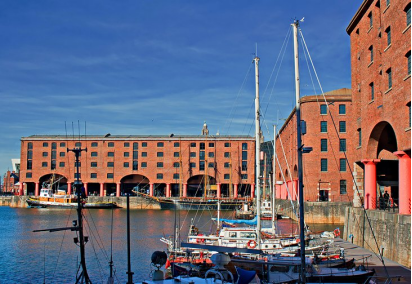
The superbly restored Albert Dock, the first such facility in Britain to be built using only bricks and iron, is an impressive five-story-high block of buildings surrounding the harbor basin where cotton, tobacco, and sugar were once unloaded. These enormous Victorian structures are built around an arcaded walkway, their cast Tuscan columns once serving as capstans for moored ships. The decoratively restored warehouses with their luxury apartments, designer boutiques, restaurants, cafés, and museums are a prime example of "gentrification," a phenomena which can also be witnessed in London, Manchester and Glasgow, whereby once decaying inner cities are restored to provide recreational amenities.
3. Tate Gallery:
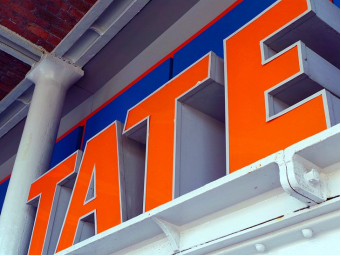
An acclaimed branch of the Tate Gallery has been established in the Albert Dock. As chance would have it, the London Tate Gallery - established at the end of the 19th century with a legacy from the sugar magnate Sir Henry Tate - found space in the warehouses where raw sugar was stored before being refined. The ground floor of the "Tate of the North" has exhibition halls and galleries dedicated to contemporary art as well as works on loan from the London gallery.
VI. History
King John's letters patent of 1207 announced the foundation of the borough of Liverpool. By the middle of the 16th century, the population was still around 500. The original street plan of Liverpool is said to have been designed by King John near the same time it was granted a royal charter, making it a borough. The original seven streets were laid out in an H shape: Bank Street (now Water Street), Castle Street, Chapel Street, Dale Street, Juggler Street (now High Street), Moor Street (now Tithebarn Street) and Whiteacre Street (now Old Hall Street).
In the 17th century there was slow progress in trade and population growth. Battles for control of the town were waged during the English Civil War, including an eighteen-day siege in 1644.[citation needed] In 1699, the same year as its first recorded slave ship, Liverpool Merchant, set sail for Africa, Liverpool was made a parish by Act of Parliament, although arguably the legislation of 1695 that reformed the Liverpool council was of more significance to its subsequent development. Since Roman times, the nearby city of Chester on the River Dee had been the region's principal port on the Irish Sea. However, as the Dee began to silt up, maritime trade from Chester became increasingly difficult and shifted towards Liverpool on the neighbouring River Mersey.
As trade from the West Indies, including sugar, surpassed that of Ireland and Europe, and as the River Dee continued to silt up, Liverpool began to grow with increasing rapidity. The first commercial wet dock was built in Liverpool in 1715.[28][29] Substantial profits from the slave trade and tobacco helped the town to prosper and rapidly grow, although several prominent local men, including William Rathbone, William Roscoe and Edward Rushton, were at the forefront of the local abolitionist movement.
VII. Culture
Music
The Beatles statue in their home city Liverpool. The group are the most commercially successful and critically acclaimed band in popular music.
Liverpool is internationally known for music and is recognised by Guinness World Records as the World Capital City of Pop. Musicians from the city have produced 56 No. 1 singles, more than any other city in the world.[13][14] Both the most successful male band and girl group in global music history have contained Liverpudlian members. Liverpool is most famous as the birthplace of the Beatles and during the 1960s was at the forefront of the Beat Music movement, which would eventually lead to the British Invasion. Many notable musicians of the time originated in the city including Billy J Kramer, Cilla Black, Gerry and the Pacemakers and The Searchers. The influence of musicians from Liverpool, coupled with other cultural exploits of the time, such as the Liverpool poets, prompted American poet Allen Ginsberg to proclaim that the city was "the centre of consciousness of the human universe". Other musicians from Liverpool include Billy Fury, A Flock of Seagulls, Echo and the Bunnymen, Frankie Goes to Hollywood, Frankie Vaughan, Anathema, Ladytron, The Zutons, Cast, Atomic Kitten and Rebecca Ferguson. The La's 1990 hit single "There She Goes" was described by Rolling Stone as a "founding piece of Britpop’s
Literature
Felicia Hemans (née Browne) was born in Dale Street, Liverpool, in 1793, although she later moved to Flintshire, in Wales. Felicia was born in Liverpool, a granddaughter of the Venetian consul in that city. Her father's business soon brought the family to Denbighshire in North Wales, where she spent her youth. They made their home near Abergele and St. Asaph (Flintshire), and it is clear that she came to regard herself as Welsh by adoption, later referring to Wales as "Land of my childhood, my home and my dead". Her first poems, dedicated to the Prince of Wales, were published in Liverpool in 1808, when she was only fourteen, arousing the interest of Percy Bysshe Shelley, who briefly corresponded with her. [284]
A number of notable authors have visited Liverpool, including Daniel Defoe, Washington Irving, Thomas De Quincey, Herman Melville, Nathaniel Hawthorne, Charles Dickens, Gerard Manley Hopkins and Hugh Walpole. Daniel Defoe, after visiting the city, described it, as "one of the wonders of Britain in his 'Tour through England and Wales'".
VIII. Other information
Football
The Merseyside derby is the football match between the two biggest clubs in the city, Liverpool in red and Everton in blue.
The City of Liverpool is the most successful footballing city in England. Football is the most popular sport in the city, home to Everton F.C. and Liverpool F.C.. Between them, the clubs have won 28 English First Division titles, 12 FA Cup titles, 10 League Cup titles, 6 European Cup titles, 1 European Cup Winners' Cup title, 3 UEFA Cup titles, and 24 FA Charity Shields. The clubs both compete in the Premier League, of which they are founding members, and contest the Merseyside derby, dubbed the 'friendly derby' despite there having been more sending-offs in this fixture than any other. However, unlike many other derbies, it is not rare for families in the city to contain supporters of both clubs. Liverpool F.C. is the English and British club with the most European Cup titles with six, the latest in 2019.
Everton F.C. were founded in 1878 and play at Goodison Park and Liverpool F.C. were founded in 1892 and play at Anfield. Many high-profile players have played for the clubs, including Dixie Dean, Alan Ball, Gary Lineker, Neville Southall and Wayne Rooney for Everton F.C. and Kenny Dalglish, Alan Hansen, Kevin Keegan, Ian Rush and Steven Gerrard for Liverpool F.C.. Notable managers of the clubs include Harry Catterick and Howard Kendall of Everton, and Bill Shankly and Bob Paisley of Liverpool. Famous professional footballers from Liverpool include Peter Reid, Gary Ablett, Wayne Rooney, Steven Gerrard, Jamie Carragher and Tony Hibbert. The City of Liverpool is the only one in England to have staged top division football every single season since the formation of the Football League in 1888, and both of the city's clubs play in high-capacity stadiums.
IX. Contact information
Mayor/Officer: Joseph Anderson
Tel: 0151 230 5770
Mail: slo@liverpoolfc.com
